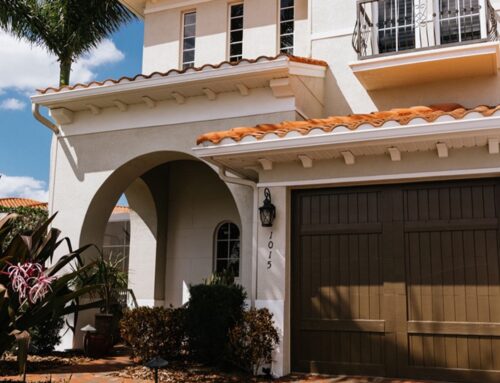How much thought do you give to the preparation of your walls before unleashing a new hue across your indoor space? Proper wall preparation is the bedrock of a successful painting project, impacting not just the ease of application but also the longevity of the finish. Inadequate prep can lead to uneven surfaces, paint adherence issues, and unsightly blemishes that detract from the final aesthetic. In this guide, we’ll delve into the crucial steps that pave the way for a flawless paint job, from cleaning and repairing to priming and patching. You’ll learn what to embrace and what to avoid as you prepare your walls for their new look. Whether you’re revamping a cozy corner or reimagining an expansive space, understanding these essentials will streamline your efforts and optimize your results.
Proper Cleaning and Sanding Techniques
Proper cleaning and sanding are crucial steps in ensuring a smooth, lasting paint finish, whether you’re tackling a residential or commercial space. Before any brush or roller meets the surface, it’s vital to prepare adequately to achieve professional results.
Start with cleaning. Dust, dirt, and grime can prevent paint from adhering correctly. For exterior surfaces, consider using a pressure washer to remove stubborn debris. When approaching interior surfaces, a mixture of mild detergent and water can work wonders. It’s important to allow the surface to dry completely before moving on to the next step.
Once the surface is clean, it’s time to sand. Sanding is necessary to create a profile that paint can stick to. Use medium-grit sandpaper for most surfaces. A 120-grit is usually a safe choice for walls and other areas with existing paint, while heavier grit might be required for removing old paint chips or rough patches. Sanding blocks or electric sanders can save time and ensure even pressure application, especially in large areas.
Always sand in the direction of the grain for wood surfaces. This prevents damage to the texture, maintaining the natural look. For drywall, cross-sanding at a slight angle can help smooth out any uneven patches or old tape lines.
After sanding, it is crucial to remove residual dust. A vacuum or tack cloth can efficiently pick up fine particles. Dust particles left behind will form bumps or bubbles in the paint finish, leading to a less professional look.
Remember to ensure proper ventilation in your work area during both cleaning and sanding. This practice not only protects your health by reducing exposure to potentially harmful substances but also aids in more efficient evaporation of cleaning solutions and faster dispersion of dust.
Implementing these steps carefully results in a polished, durable finish that stands the test of time, elevating both aesthetic appeal and property value.
When to Use a Primer
Understanding when to use a primer can drastically improve the durability and finish of your paint job, whether it’s for a residential property or a commercial project. Often considered the unsung hero of painting, primer plays an important role in ensuring that your paint adheres properly, provides adequate coverage, and lasts long, even in the temperate climate of Sarasota and Manatee Counties.
First, consider the surface. Bare, untreated wood is highly absorbent. Without a primer, paint will soak into the wood, leading to uneven coverage and potentially costly touch-ups. A primer seals the wood, providing a smooth base for paint. For metal surfaces, especially those prone to rust like fences or railings, an anti-corrosive primer will prevent rust from forming and prolong the life of the paint job.
If you’re painting a darker surface with a lighter color, primer is crucial. It acts as a neutral base, preventing the original color from bleeding through and ensuring the new paint color is vivid. Likewise, when shifting from oil-based to latex paint, a primer designed for adhesion between these two types is necessary to prevent peeling.
Sometimes, walls have been soiled by smoke damage, grease, or other stains that regular paint won’t cover. Stain-blocking primers contain powerful ingredients that trap these substances, preventing them from discoloring the new paint. This is particularly beneficial in kitchens or industrial settings where grease and smoke are common.
In older constructions, surfaces may have uneven porosity. Primers help to standardize the absorbency, allowing the paint to sit evenly. This also applies to drywall repairs, where joint compound can create a different texture compared to the surrounding wall. A primer smooths these disparities, facilitating an even finish.
Finally, consider the environment. High-humidity areas like bathrooms need primers designed to combat mildew. This added layer of protection can keep walls looking fresh and prevent common damage caused by moisture. For exterior projects, use primers that withstand the heavy rainfall and sun exposure common to Florida. These specialized products seal the surface, reducing the risk of peeling and fading over time.
Common Mistakes to Avoid
Painting can transform a space, affecting both its aesthetics and ambiance. Whether updating a home or a business, avoiding common painting mistakes can save time and money, and result in a higher quality finish.
One frequent error is inadequate surface preparation. Dirt, grease, or old paint can affect how new paint looks and sticks. For surfaces outdoors and indoors, ensure they are clean and smooth before beginning. Using a suitable primer can also help the paint adhere better, especially on newly constructed surfaces or areas that have been repaired.
The selection of paint type plays a crucial role in the outcome. Many choose the wrong kind, leading to unsatisfactory results. In humid areas like Sarasota and Manatee Counties, where moisture can be an issue, opting for mildew-resistant paint is advisable. It’s also essential to distinguish between exterior and interior paints. They contain different resin bases, affecting their durability and appearance.
Skipping or rushing the drying time between coats is another mistake. Paint needs sufficient time to dry according to the manufacturer’s instructions—usually a few hours. Painting too soon affects the color and finish quality, often requiring extra coats and more paint.
Using low-quality tools can negatively impact the quality of the work. Cheap brushes or rollers often leave streaks or uneven patches. Investing in quality tools ensures a smoother and more professional finish. It minimizes shedding bristles and provides even coverage.
Finally, weather conditions can significantly influence painting projects. For exteriors, avoid painting in direct sunlight or when rain is expected. High temperatures can make the paint dry too fast, while moisture from rain can cause bubbling or peeling. Indoors or outdoors, it’s best to work in moderate temperatures and low humidity for optimal results.
By steering clear of these common pitfalls, the effort and expense put into painting projects are more likely to bring about desirable results.
Next Steps
Concluding your painting project with a focus on wall preparation not only enhances the finished look but also ensures its longevity. Whether you’re a homeowner refreshing your space or a business owner refining your premises, the importance of cleaning, sanding, and correctly using primers cannot be overstated. These preparatory steps create the ideal canvas for your chosen color, contributing to a smoother application and a more vibrant, cohesive appearance.
Avoiding common pitfalls such as skipping primer when necessary or rushing through the drying process can further safeguard the quality of your work. By investing time and effort into these foundational tasks, you set the stage for a successful painting endeavor, saving time and resources in the long run.
When the walls are prepped with precision and care, the result is more than just aesthetically pleasing; it’s a testament to thoughtful and responsible upkeep. At A Step Above Painting in Sarasota, we understand the nuances that contribute to exceptional paintwork. Contact us today to schedule a free consultation or request a quote, and let us partner with you to bring your vision to life with professional precision tailored to your needs.





